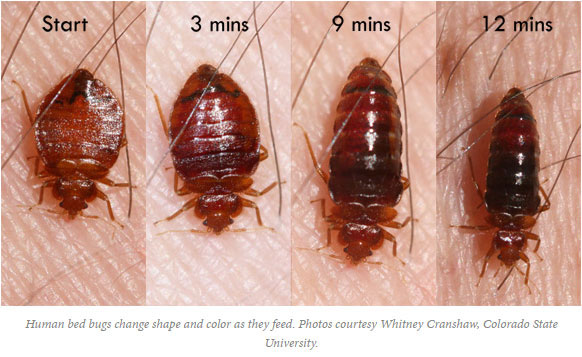Comprehending the Lifecycle of Bugs for Targeted Control Approaches
Understanding the lifecycle of parasites is an essential aspect of effective pest monitoring techniques. By comprehending the different stages of advancement that insects undertake, an extra targeted and accurate approach can be embraced to manage their populations. This expertise not just drops light on the susceptabilities within the bug lifecycle yet also leads the means for executing strategic measures that can interrupt their growth and reproduction cycles. Via a much deeper understanding of exactly how parasites thrive and advance, customized control methods can be made to resolve certain factors in their lifecycle, inevitably resulting in more successful pest management outcomes.
Importance of Comprehending Pest Lifecycle
Comprehending the lifecycle of pests is vital for creating efficient and targeted control strategies in pest management. By comprehending the various stages a parasite undergoes from egg to adult, parasite control experts can determine prone points in the lifecycle where intervention can be most effective. As an example, understanding when larvae are most active can help identify the optimal timing for using larvicides. Furthermore, recognizing the life-span of a parasite varieties can aid in forecasting populace growth patterns and potential invasion risks.
Furthermore, identifying the particular environmental problems necessary for each and every phase of the pest's lifecycle can lead decisions on environment modification or exclusion techniques to lower and interfere with the lifecycle parasite populaces. This expertise makes it possible for pest administration professionals to apply positive measures as opposed to counting entirely on responsive treatments, leading to even more sustainable and lasting pest control remedies. Ultimately, a thorough understanding of insect lifecycles equips insect control specialists to customize their methods effectively, lessening environmental effects and maximizing control outcomes.
Trick Phases in Insect Advancement
To effectively execute targeted control methods in parasite monitoring, a critical element hinges on comprehensively recognizing and understanding the crucial stages in bug growth. Parasite advancement normally consists of a number of crucial stages that are essential for their lifecycle and administration. The very first phase is the egg phase, where bugs lay eggs that later hatch right into larvae. Larvae after that advance right into pupae, a phase where they go through transformation prior to becoming grown-up insects. Comprehending these phases is essential as it assists in identifying weak spots in the lifecycle where control steps can be most efficient.

Vulnerabilities in Bug Lifecycle
Throughout the numerous stages of a find more information pest's lifecycle, unique vulnerabilities arise that can be strategically targeted for effective control measures. One important vulnerability lies in the egg phase, where pests are usually a lot more vulnerable to particular pesticides or biological control agents as a result of their soft outer covering, making them less complicated targets for treatment. Additionally, the nymph or larval phase provides susceptabilities as bugs undergo rapid growth and advancement, needing high energy usage that can be exploited by interrupting their food resources or introducing growth preventions. Pupal phases, characterized by stability and change, supply a window for targeted control with physical obstacles or particular treatments that hinder successful development. Grown-up parasites, while more resistant due to their reproductive capability, can still be prone throughout breeding or egg-laying activities, which can be disrupted via pheromone catches or sanitation techniques. Recognizing these susceptabilities in the insect lifecycle is crucial for establishing specific and reliable control strategies that properly handle insect populations while lessening environmental effect.
Applying Targeted Control Procedures

Applying targeted control procedures commonly entails a multi-faceted technique. This might include environment alteration to make the atmosphere much less friendly to bugs, such as eliminating standing water for insect control or sealing access factors for rats. Additionally, organic control approaches can be made use of, where natural predators or microorganisms are presented to maintain bug populaces in check.
Chemical control, such as the mindful application of chemicals, is one more usual technique. It is vital to utilize these compounds deliberately to minimize environmental effect and prospective injury to non-target varieties - A1 bed bug removal houston. Integrated Bug Administration (IPM) approaches that incorporate various control steps in a worked with and sustainable way are typically the most reliable in achieving lasting insect monitoring objectives. By applying targeted control measures based upon a thorough understanding of pest lifecycles, bug populations can be efficiently managed while decreasing dangers to human health and wellness and the atmosphere.
Improved Bug Monitoring Practices
.jpg)
Furthermore, the unification of organic control representatives, such as all-natural predators or virus of pests, can assist reduce reliance on chemical pesticides and promote a much more well balanced community. Carrying out physical obstacles and traps can additionally become part of boosted insect administration techniques, offering non-toxic and targeted options for pest control. Furthermore, making use of pheromones and other semiochemicals can disrupt pest breeding patterns and communication, bring about minimized pest populaces in time.
Verdict
By recognizing vital stages in bug development and vulnerabilities in their lifecycle, targeted control measures can be carried out to decrease bug populaces. Improved insect monitoring techniques can aid minimize the dependence on broad-spectrum chemicals and advertise more lasting and eco friendly bug control techniques.
Comprehending the lifecycle of pests is crucial for creating reliable and targeted control approaches in pest administration. By understanding the various phases an insect goes through from egg to grownup, parasite control specialists can identify prone factors in the lifecycle where treatment can be most effective. Eventually, a detailed understanding of bug lifecycles empowers bug control experts to tailor their strategies effectively, reducing environmental influences and making best use of control end results.
By carrying out targeted control measures based on an extensive understanding of pest lifecycles, insect populations can be properly controlled while reducing risks to human health and the atmosphere.
By identifying essential phases in parasite advancement and susceptabilities in their lifecycle, targeted control steps can be executed to reduce insect populaces.